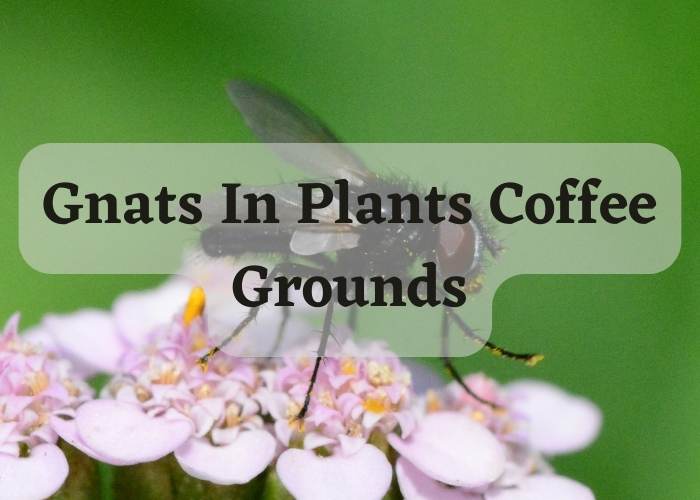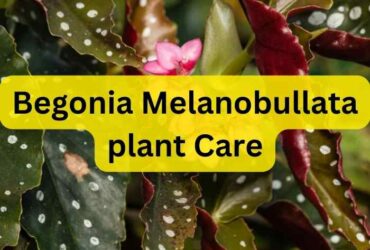Are you facing a gnats problem? Do you see Gnats Around The Coffee Pot or causing trouble to your plant? Well, don’t worry. We’ve got you covered!
Gnats in plants coffee grounds are one essential component for getting rid of these pests that may harm your plants is coffee grinds.
Coffee grounds form a barrier susceptible to mould growth and draw fungus gnats when placed on the soil’s surface. Coffee grounds only provide more of the organic materials that they like decomposing.
If coffee grounds are composted and then put into potting soil, there may be some truth to the claim that they repel gnats. However, adding ground coffee to the soil won’t solve the issue. This article will discuss Gnats in plants coffee grounds and what causes the gnats infestation. So stay tuned!
What Are Gnats?
Gnats are diminutive, two-winged flies that are a member of the Culicidae family, including mosquitoes. They typically measure less than 1/8 inch long and are infamous for flying around people’s faces and eyes.
Gnats are frequently observed around water or in moist areas, such as gardens or close to indoor plants. Given that they feed on plant roots and have the potential to harm crops, some gnat species are also regarded as agricultural pests.
Although gnats are usually not harmful to people, they can still be annoying, and some people may be allergic to their bites.
Gnats and Their Impact on Plants
Gnats are a small family of Mycetophilidae or Sciaridae flying insects. Although gnats are typically safe for humans, as mentioned above, they can seriously harm plants.
Gnats lay their eggs in the soil, and the larvae eat the roots of plants after hatching. The plant may experience stunted growth and, as a result, become weak and more prone to disease. Gnat infestations can, in some cases, be so bad that they kill plants.
The difficulty of getting rid of gnats in plants is one of the most significant issues. The larvae are difficult to see as they hatch from the eggs, which the adults lay in the soil as they fly around the plant.
Even as the adult gnats are eliminated, the larvae can remain hidden in the soil and keep eating the plant’s roots. Therefore, it’s critical to adopt a thorough strategy when dealing with gnat infestations, which may require applying several techniques over an extended period.
Some common signs of a gnat infestation in plants include yellowing or wilting leaves, stunted growth, and a general decline in plant health. If you suspect your plant has a gnat infestation, it’s essential to act quickly to prevent further damage.
The Science Behind Using Coffee Grounds to Control Gnats

The theory behind The Gnats in Plants coffee grounds is that the grounds’ acidity can change the soil’s pH and produce an environment that is less conducive to the growth of fungus, which provides gnats with food.
Coffee grounds have a pH range of 6.0 to 6.8, similar to the pH range of many different plant species. This means that they are slightly acidic.
When coffee grounds are added to the soil, they can help to lower the pH level slightly, creating an environment that makes it harder for some types of fungus that gnats eat to grow. Additionally, nitrogen found in coffee grounds can fertilise the soil and encourage the growth of healthy plants.
Although some anecdotal evidence supports the idea that coffee grounds can help plants control gnats, there is currently little scientific evidence to back this assertion.
Some studies have shown that adding coffee grounds to soil can promote the growth of particular bacteria and fungi, while other studies have found no appreciable difference.
Because of this, it’s crucial to use coffee grounds as part of a comprehensive strategy rather than as a stand-alone treatment for gnat infestations.
It’s essential to remember that the type of soil and plant in question may also affect how compelling coffee grounds are.
Generally, plants like roses, azaleas, and rhododendrons that prefer slightly acidic soil are best suited for coffee grounds. Coffee grounds may not have the same positive effects on plants that prefer more alkaline soil.
What Causes Gnats in Plants?
There could be numerous possible reasons for gnats in plants. You might find it hard to guess why, so we’ve researched some of the leading causes of gnats in plants.
Moist or Water-logged Soil
One of the significant causes of gnats is overwatered soil. As you add more water, your plant may experience excessively high humidity.
Therefore, this environment is ideal for the fungus to thrive and multiply, which will cause further damage.
Organic Waste
Another reason for the gnats infestation might be organic waste. Organic wastes, such as leaves, provide a natural food source for the fungus gnats’ larvae.
Therefore, an abundance of organic residue in the soil fosters an environment favourable for their growth.
Fixed Source of Light
Light is a draw for gnats. They gravitate towards house lighting fixtures or windows that let in natural light.
The tiny insects around your indoor plants are probably gnats if they are near any natural light source, such as a window or lighting fixtures like lamps.
Signs Of A Gnat Infestation
Here are some signs of a gnat infestation:
Adult gnats flying around
The most obvious sign of a gnat infestation is observing adult gnats flying around your plants or inside your house. Typically grey or black, adult gnats are tiny, fluttering insects.
Larvae in the soil
In moist soil, gnats lay their eggs, and the resulting larvae are frequently visible in the ground. They resemble worms and are tiny, white, and round.
Yellowing leaves
An infestation of gnats may cause your plant’s yellowing leaves. This is because the larvae feed on the plant’s roots, which can deplete the plant of nutrients and result in yellowing leaves.
Wilting or drooping plants
Gnat larvae can harm plant roots, resulting in the plant wilting or drooping. It may indicate a gnat infestation if you notice that your plant appears sickly or frail.
Fungus on the soil
A gnat infestation may be indicated by mould or fungus on the soil’s surface because fungus gnats feed on the fungus that develops in moist soil.
How to Get Rid of Gnats in Plants Naturally?

The good news is that you may get rid of gnats in your plants in various natural ways. Those tiny flies circling are pretty unpleasant.
You may always use coffee grounds, sticky traps, apple cider vinegar, or even potato traps to eliminate gnats in plants. You must also entirely alter the soil and introduce good worms.
Use insecticides, fungicides, and basic chemicals, and cease over-watering the plant. Here are a few ways to get rid of gnats in plants
Using Sticky Traps
Adult pests can be easily captured using sticky traps like adhesive-coated yellow, red, and yellow sticky notes. T
These insects fly erratically, and bright colours seem to draw them in for some reason. Once the bugs fly into it, the sticky notes will capture them.
These sticky traps also work great if you don’t have apple cider vinegar or want to avoid dealing with the vinegar scent. The gnats are drawn to them because they are yellow.
Use an Apple Cider Vinegar Mix
Killing out all the eggs and larvae in the soil is crucial for removing gnats in your houseplants. Placing an apple cider concoction next to your problematic plant is one natural method for catching gnat insects.
A teaspoon of sugar, a few tiny drops of liquid dish soap, and one part apple cider vinegar to two parts water should all be combined in a shallow dish.
Using Potato Traps
If nothing else works and you need to get rid of these fungi, try using potatoes. Chop them up and scatter the pieces in the gnat-infested soil.
The dampness from the chopped potatoes will attract fungus gnat larvae, who will then feed on them. You can remove them afterwards and carry out the procedure once more.
Change the Soil Completely
Consider pulling the plants out of the pots and washing up the soil to get rid of gnats on houseplants. When handling the plant’s roots, exercise caution.
After emptying the pot, properly wipe it with rubbing alcohol or hydrogen peroxide to sanitise it. After doing this, you may successfully replace your houseplant, fill the pot with new soil, and discard the trash.
Water with Mosquito Dunks/Bits
The wonder solution known as mosquito dunks will stop fungus gnats in their tracks and is also quite simple to use.
You only need to place a little in your watering can and use it to water your plants. Additionally, each component will withstand several waterings. These include naturally occurring bacteria called BTI as the active component, which is poisonous to insect larvae like gnats and mosquitoes.
Using Beneficial Worms
The safest and fastest approach to get rid of fungus gnats is by using beneficial worms like nematodes, which may be mixed into the soil without endangering the plant.
Nematodes target gnat larvae and feed on them without harming your plants; as an added plus, they won’t also become a nuisance. You may leave them in the soil since they prevent the gnats from returning and act as the plant’s vigilant guardians.
Avoid Overwatering Your Plants
A damp or soggy soil is ideal for fungus gnat growth. Therefore, it’s advisable to refrain from overwatering plants. Water plants once a week to maintain the soil moist enough for the plant to survive but dry enough to deter gnats. Give yourself some time between waterings.
Additionally, you should select a container with good drainage to avoid overwatering. In contrast to well-drained soils, where fungus gnat larvae may live, they cannot survive in wet conditions.
Gnats in Plants Coffee Grounds
Gnats in Plants Coffee Grounds is the best way to end the infestation. Scatter some used coffee grounds over the top layer of soil in your potted plants and give them a quick mist of water to help the grounds absorb.
To get rid of the gnats, repeat this procedure once per week. The fungus that gnats frequently consume can be controlled with the help of coffee grounds.
It’s important to remember that coffee grounds might not be enough to eliminate a gnat infestation. It’s also advised to avoid overwatering and to keep the soil dry because moist soil can draw gnats.
Sprinkle Cinnamon on the Soil
You may sprinkle some cinnamon on top of the soil while waiting for diatomaceous earth to arrive or as soon as you realise you have fungus gnats.
The cinnamon stops them from producing eggs and acts as a natural fungicide and irritant. But not all cinnamon is created equal when it comes to gnat control.
Ceylon cinnamon is what you want to use, not the common variety most people already have at home.
Add Diatomaceous Earth to Every Pot of Soil
Diatomaceous earth is created from organic material that has been fossilised, such as algae, plus a few naturally existing minerals, such as silica.
The excellent powder kills insects by drying them from the silica’s sharp edges.
Using Simple Chemicals
To get rid of gnats, you can treat your soil with hydrogen peroxide in low amounts. Hydrogen peroxide therapy is quite successful. Pour three percent hydrogen peroxide and three times as much water into the gnat-infested ground.
A straightforward Epsom salt and water treatment will work for serious infestation issues. However, you need to do a patch test to determine whether Epsom salt is safe for your plants, like with many other chemical compounds.
How to Use Coffee Grounds to Control Gnats in Plants
If you’ve decided on Gnats in Plants coffee grounds, there are a few things to remember. Here are some tips to help you get started:
Use only used coffee grounds
The excessive acidity of freshly ground coffee grounds could harm your plants. Make sure that the coffee grounds you use are cool to the touch and have already been brewed.
Sprinkle the coffee grounds on top of the soil
The soil surrounding the plant’s base should be covered with coffee grounds. As long as you do not disturb the plant’s roots, you can also incorporate the coffee grounds into the top inch of the soil.
Water the plant as usual
Sprinkle the plant with water as usual after adding the coffee grounds. Coffee grounds will be more evenly disposed of throughout the soil with the aid of water.
Repeat
You should repeat this procedure several times over several weeks, depending on how bad the gnat infestation is.
Conclusion
Gnats in plants coffee grounds are the best way to get rid of the infestation. If you’ve dealt with gnats in plants for some time, you know how bothersome they can get. Early removal is usually preferable and simpler than later removal. You’ve learnt some of the most effective methods to get rid of gnats.
You might need to turn to something more potent if you’ve exhausted all-natural options and the fungus gnats still won’t go away. Your most significant line of defence is often a bonide systemic medication since it addresses the issue from the inside out.
With all the knowledge in this article, your fungus gnat issue should be handled quickly.
FAQs
How do you kill gnat larvae in soil?
To kill gnat larvae in the soil, allow the soil to dry out completely and then water with a mixture of one part hydrogen peroxide to four parts water.
Do coffee grounds kill fungus?
Coffee grounds may help inhibit the growth of some fungi, but they are not a guaranteed method for killing fungi.
Does cinnamon kill fungus gnats?
Cinnamon has antifungal properties that may help control fungus gnats in soil.
What is a homemade solution for gnats?
A homemade solution for gnats can be made by mixing apple cider vinegar and a few drops of dish soap in a small bowl, which will attract and trap the gnats.
What is the best way to get rid of the gnats infestation?
Gnats in plants coffee grounds are the best way to get rid of the infestation.
For more such informative guides, follow Kitchen and Gardening!














Leave a Reply